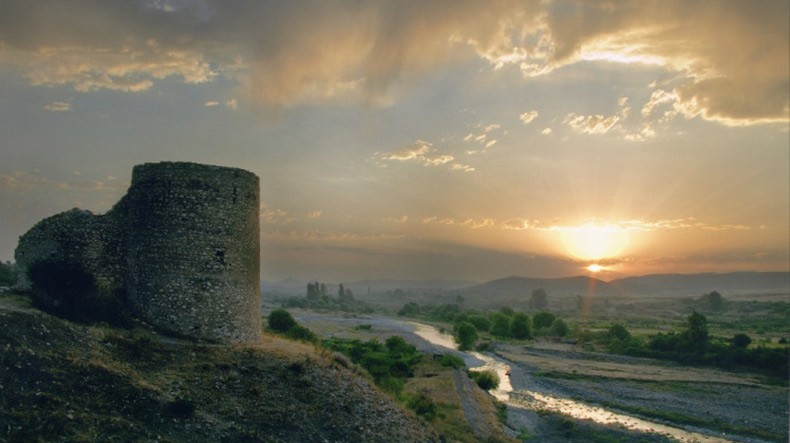
Destination Artsakh’s unique trip to NKR: Medieval fortresses and castles, towns spread on hills and pagan temples
A unique and informative trip to the north-eastern part of Artsakh (Nagorno Karabakh Republic) will reveal the visitor medieval fortresses and castles, churches and monasteries, reads an article published on Destination Artsakh, a travel blog.
Askeran city was founded in the early 20th century nearby to the ancient fort. The historical museum is established in the city. It stores a unique collection. The church services are held in the newly built Church of St. Astvatsatsin (Holy Virgin). Glorious walls of the Middle Ages Askeran fortress are visible on the approach to the town, already from the road leading to Tigranakert Reserve, 14 km east of Stepanakert. This fortress played an important defensive role during the Armenian-Tatar clashes in 1905 – 1906, and the Turkish raids in 1918 – 1920 years, the article reads.
Askeran historical museum presents numerous ancient artefacts discovered during excavations in the Askeran region, showing the way of life of people who in ancient times inhabited the area. The museum consists of two departments – department of military art, which presents materials about World War II (1939-1945) and the Artsakh liberation war – books, photographs, and personal files of dead veterans of the liberation movement. The second department presents Archaeological and ethnographic exhibits.
According to the article, state historical and cultural reserve “Tigranakert” was created in 2008 in the area of the excavations of the ancient Armenian town of Tigranakert in order to preserve the historical and cultural heritage of the early Middle Ages. The excavations found that Tigranakert, like any classical medieval town, had quarter, surrounded by an impregnable wall, cultural and handicraft or central quarter, a vast agricultural suburb. An Archaeological Museum acting on the reserve was founded in 2010. The museum demonstrates relics found during the excavations.
The blog next presents Martakert City. Martakert regional centre is a small cosy town, “spread out in the hills.” During the Azerbaijani occupation, the town was totally damaged, but after the liberation rather quickly recovered.
“Surprisingly, even after the temporary occupation, the city preserved 19th-century buildings. Many houses of the old Armenian quarter hit unique architectural style. They are all decorated with carvings. The narrow streets of the old town are paved with cobblestones. Church, around which there are gravestones with images of idols, the locals call ‘pagan cemetery.’ In the old pagan settlements of Martakert were found ancient stone sarcophagus, two of which are presented in Stepanakert, in Artsakh State Historical museum,” the blog writes.
Visiting the historical museum in Martakert, one can get acquainted with numerous exhibits belonging to different historical periods of the region. The castle Jraberd, surrounded with water on three sides, is built on the right bank of the river Tartar, at the junction of the rivers Tartar and Trkchi in the village Tonashen. The fortress area is quite extensive. Jraberd is one of the best-preserved fortresses in Karabakh and is of great interest not only for historians, but also to fans of extreme tourism.
Near the village Tonashen, 7 km from the famous castle Jraberd, is the monastery Yerek Mankunk “Eritsmankantsvank.” The architectural complex consists of a church, and two residential buildings. Khachkars are walled up in the walls of the monastery, dating from 1571, 1620, 1745 years.
Newsfeed
Videos






























